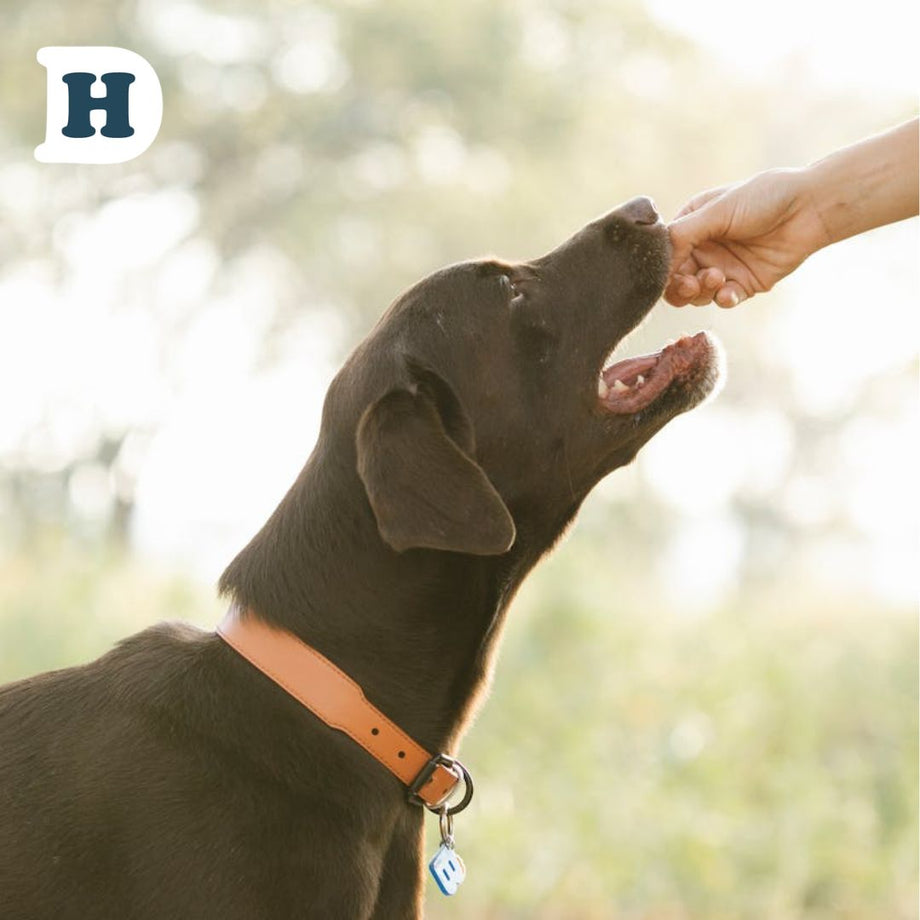 Welcome to a guide that will help you navigate the world of responsible treat feeding for your furry companion. We all love to spoil our dogs with tasty treats, but it's important to find a balance between indulgence and maintaining their overall health. In this comprehensive article, we will delve into the key factors to consider when selecting treats, portion control, and the potential risks associated with excessive treat consumption. We'll also explore alternative options to traditional treats that can provide both nutrition and satisfaction for your beloved pet. Whether you're a new dog owner or a seasoned pro, this guide will equip you with the knowledge and tools to ensure that your pup's treat time is both enjoyable and responsible. So, let's dive in and discover the secrets to keeping your dog happy and healthy while still indulging their taste buds!
Welcome to a guide that will help you navigate the world of responsible treat feeding for your furry companion. We all love to spoil our dogs with tasty treats, but it's important to find a balance between indulgence and maintaining their overall health. In this comprehensive article, we will delve into the key factors to consider when selecting treats, portion control, and the potential risks associated with excessive treat consumption. We'll also explore alternative options to traditional treats that can provide both nutrition and satisfaction for your beloved pet. Whether you're a new dog owner or a seasoned pro, this guide will equip you with the knowledge and tools to ensure that your pup's treat time is both enjoyable and responsible. So, let's dive in and discover the secrets to keeping your dog happy and healthy while still indulging their taste buds!
Understanding responsible treat feeding for dogs
When it comes to treating your dog, it's essential to understand the concept of responsible treat feeding. Treats should be seen as a supplement to a balanced diet, not a replacement for it. Just like humans, dogs need a variety of nutrients to thrive. Feeding them a diet solely comprised of treats can lead to nutritional deficiencies and health issues. To ensure you're providing the best for your furry friend, it's crucial to strike a balance between indulgence and nutrition.
One way to achieve this balance is by selecting treats that are specifically formulated for dogs. These treats are typically made with high-quality ingredients and designed to meet their nutritional needs. Look for treats that are rich in protein, low in fat, and free from artificial additives or fillers. It's also important to consider your dog's size, age, and any specific dietary requirements they may have.
Another aspect of responsible treat feeding is portion control. Just like with their regular meals, dogs should have treats in moderation. Overfeeding can lead to obesity and other health problems. Consulting the feeding guidelines on the treat packaging can give you an idea of the recommended portion size for your dog. However, keep in mind that these are general guidelines, and individual dogs may have different needs. It's always best to consult with your veterinarian to determine the appropriate amount of treats for your specific dog.
The importance of a balanced diet for dogs
At Delivery Hound, we understand that a balanced diet is the foundation of good health for dogs. Just like humans, dogs require a mix of proteins, carbohydrates, fats, vitamins, and minerals to thrive. While treats can be a great way to reward and bond with your furry friend, they should not make up a significant portion of their daily food intake. Instead, focus on providing them with a nutritious diet that meets their specific needs. Check out our range of Man's Best Grain-Free Dog food, delivered without any single-use plastic waste Sydney wide.
Protein is especially important for dogs as it supports their growth, development, and overall muscle health. Good sources of protein include lean meats, fish, eggs, and plant-based proteins like lentils and quinoa. Carbohydrates, such as whole grains and vegetables, provide dogs with essential energy. Healthy fats, like those found in fish oil or flaxseed, help support their skin and coat health. Finally, vitamins and minerals from fruits and vegetables are vital for their overall well-being.
By ensuring that your dog's regular meals are well-balanced and provide them with the necessary nutrients, you can reduce their dependence on treats for nutrition. This allows you to focus on using treats as occasional rewards or training tools without compromising their health. Remember, a balanced diet is the key to a happy and healthy pup!
Common mistakes in treat feeding and their consequences
While treats can be a great way to show love and affection to your dog, it's important to be aware of common mistakes in treat feeding and their potential consequences. One common mistake is overfeeding treats, which can lead to weight gain and obesity. Obesity in dogs can contribute to a range of health issues, including joint problems, diabetes, and heart disease. It's crucial to keep an eye on your dog's weight and adjust their treat intake accordingly to maintain a healthy body condition.
Another mistake is using treats as a primary source of comfort or stress relief. While it's natural to want to comfort your dog with treats during stressful situations, relying on treats as a coping mechanism can create a cycle of emotional eating and dependency. Instead, try to identify and address the underlying cause of their stress or anxiety. Consult with a professional trainer or behaviorist who can provide guidance on alternative ways to help your dog feel calm and secure.
Additionally, some dog owners may unknowingly feed their pets treats that are high in fat, sugar, or artificial additives. These treats can be detrimental to their health and contribute to issues like dental problems, allergies, and digestive issues. Always read the ingredient list and nutritional information before purchasing treats for your dog. Opt for treats made from natural, wholesome ingredients that prioritize your dog's health and well-being.
By being mindful of these common mistakes, you can ensure that your dog's treat time remains a positive and healthy experience. Treats should be seen as a supplement to their diet, not a way to compensate for other aspects of their well-being. With responsible treat feeding, you can strike a balance that keeps your dog happy and healthy for years to come.
Determining the right amount of treats for your dog
Determining the right amount of treats for your dog can be a bit tricky. While general guidelines exist, individual dogs may have different needs based on factors such as age, size, activity level, and overall health. To determine the appropriate amount of treats for your dog, it's best to consult with your veterinarian. They can provide personalised advice based on your dog's specific requirements.
In general, treats should make up no more than 10% of your dog's daily calorie intake. This ensures that they receive the necessary nutrients from their regular meals while still enjoying the occasional treat. Treats should be given in moderation and not used as a substitute for their regular meals. Remember, a balanced diet is essential for your dog's overall health and well-being.
When determining the right amount of treats, it's also important to consider the size and calorie content of the treats you're feeding. Smaller treats with fewer calories can be given more frequently, while larger, higher-calorie treats should be given sparingly. It's always a good idea to check the feeding guidelines provided by the treat manufacturer and adjust the portion sizes accordingly.
Monitoring your dog's weight and overall health is crucial when it comes to treat feeding. Regular weigh-ins and body condition assessments can help you determine if you're providing the right amount of treats. If you notice your dog gaining weight or becoming overweight, it's time to reevaluate their treat intake and make necessary adjustments. Your veterinarian can provide guidance on portion control and help you develop a plan to maintain a healthy weight for your dog.
Choosing healthy and nutritious treats for your dog
There are a variety of healthy treat options available for dogs, including freeze-dried meats, dehydrated fruits and vegetables, and dental chews. Freeze-dried meats are a great source of protein and can be easily broken into smaller pieces for training purposes. Dehydrated fruits and vegetables provide dogs with essential vitamins and minerals while satisfying their chewing instincts. Dental chews can help promote good oral health and reduce tartar buildup.
It's also important to consider any specific dietary requirements or allergies your dog may have. If your dog has food sensitivities or allergies, opt for treats that are specifically formulated to meet their needs. These treats are typically made with limited ingredients and avoid common allergens such as wheat, corn, and soy.
When selecting treats, always read the ingredient list and nutritional information. Look for treats that have a short and recognizable ingredient list. Avoid treats that contain excessive amounts of sugar, salt, or artificial sweeteners. Remember, the goal is to provide your dog with treats that are both tasty and nourishing. By choosing healthy and nutritious treats, you can ensure that your dog's treat time is not only enjoyable but also beneficial to their overall health.
Alternatives to traditional treats for dogs
While traditional treats are a popular choice for dog owners, there are alternative options that can provide both nutrition and satisfaction for your beloved pet. These alternatives can be particularly useful for dogs on restricted diets or those with food sensitivities. Let's explore some of these options.
Fruits and vegetables: Many fruits and vegetables are safe and healthy for dogs to eat. Apples, bananas, carrots, and green beans are just a few examples of dog-friendly options. These can be given as treats or added to their regular meals for an extra dose of nutrition. However, it's important to avoid certain fruits and vegetables that can be toxic to dogs, such as grapes, raisins, onions, and garlic.
Frozen treats: Frozen treats can be a refreshing and nutritious option for dogs, especially during hot summer months. You can make your own frozen treats by blending fruits like watermelon or berries with plain yogurt and freezing them in ice cube trays or silicone molds. These treats are not only tasty but also provide hydration and essential vitamins.
Homemade treats: Making your own treats allows you to have full control over the ingredients and ensure that they are tailored to your dog's specific needs. There are countless recipes available online for homemade dog treats using ingredients like peanut butter, oats, sweet potatoes, and more. Just be sure to avoid using ingredients that are toxic to dogs, such as chocolate, xylitol, and certain nuts.
Interactive toys: Interactive toys, such as puzzle feeders or treat-dispensing toys, can provide mental stimulation and entertainment for your dog. These toys are designed to challenge dogs and keep them engaged while rewarding them with small treats. They are a great way to provide both physical and mental exercise for your dog while reducing their dependence on traditional treats.
By exploring these alternative options, you can add variety to your dog's treat options and cater to their specific needs. Remember to introduce new foods gradually and monitor your dog for any adverse reactions. Your dog's health and happiness should always be the top priority when it comes to treat feeding.
Training techniques that don't rely on treats
While treats can be an effective tool for training, it's important to remember that they are not the only option. There are alternative training techniques that can be just as effective and don't rely solely on treats. Let's explore some of these techniques.
Positive reinforcement: Positive reinforcement involves rewarding your dog for desired behaviors with praise, affection, or playtime. Instead of relying solely on treats, use verbal cues, physical touch, and toys to reinforce good behavior. This technique helps build a strong bond between you and your dog and promotes positive learning experiences.
Clicker training: Clicker training is a popular training method that uses a clicker to mark desired behaviors and provide immediate feedback. The clicker is paired with a reward, which could be a treat, toy, or praise. Over time, the clicker becomes a conditioned reinforcer, signaling to the dog that they have performed the desired behavior. Clicker training can be a powerful tool for teaching new commands and shaping behaviours.
Play and reward: Incorporate play into your training sessions to make them more engaging and enjoyable for your dog. Use toys, games, and interactive play to reward your dog for following commands or demonstrating good behavior. This not only reinforces their training but also provides mental and physical stimulation.
Life rewards: Life rewards are rewards that are a natural part of your dog's daily routine. These rewards can include going for a walk, playing fetch, or getting belly rubs. By incorporating these rewards into your training sessions, you can reinforce good behavior without relying solely on treats.
Remember, training is an ongoing process, and consistency is key. By using a combination of techniques and finding what motivates your dog, you can create a positive and effective training experience without relying solely on treats. The goal is to build a strong bond and mutual understanding between you and your furry friend.
Monitoring your dog's weight and overall health
Regular monitoring of your dog's weight and overall health is crucial for their well-being. It allows you to detect any changes or potential issues early on and take appropriate action. Here are some tips for monitoring your dog's weight and overall health.
Regular weigh-ins: Weigh your dog regularly to track their weight. This can be done at home using a pet scale or by visiting your veterinarian. Sudden weight gain or loss can be an indication of an underlying health problem and should be addressed with your veterinarian.
Body condition assessment: In addition to weighing your dog, assess their body condition regularly. Look for signs of excessive weight gain or loss, such as a visible waistline or ribs that are easily felt. Your veterinarian can provide guidance on what a healthy body condition should look and feel like for your specific dog breed.
Monitor eating habits: Keep an eye on your dog's eating habits. Changes in appetite or eating behavior can be indicative of health issues. If your dog suddenly loses interest in treats or meals, it's worth investigating further. Frequent vomiting, diarrhea, or excessive thirst can also be signs of underlying health problems.
Regular veterinary check-ups: Schedule regular veterinary check-ups for your dog, even if they appear to be healthy. These check-ups allow your veterinarian to assess your dog's overall health, detect any potential issues, and provide preventive care. Your veterinarian can also provide personalized advice on nutrition, treat feeding, and any other concerns you may have.
By monitoring your dog's weight, body condition, eating habits, and overall health, you can ensure that they receive the necessary care and attention they need. Regular veterinary check-ups are essential for maintaining their well-being and catching any potential issues before they become more serious. Remember, you are your dog's advocate.
©deliveryhound.com.au 2023






